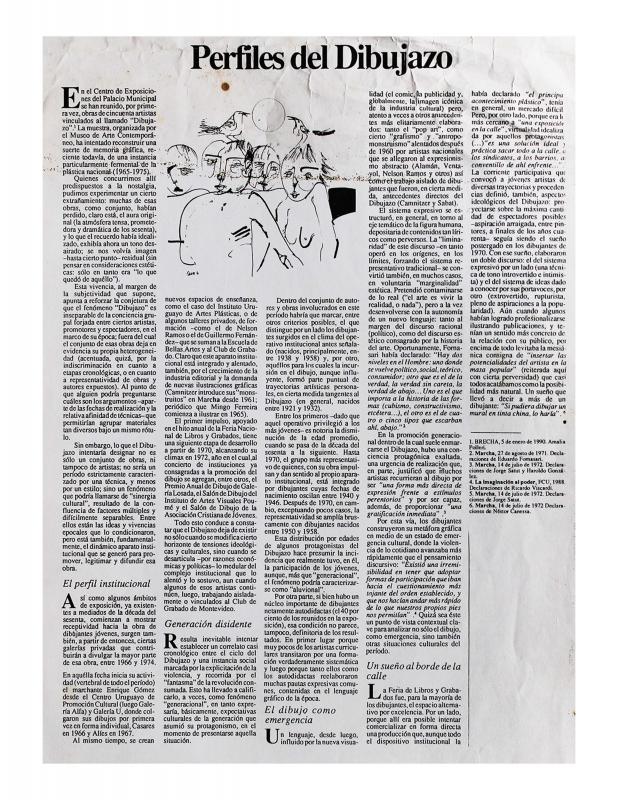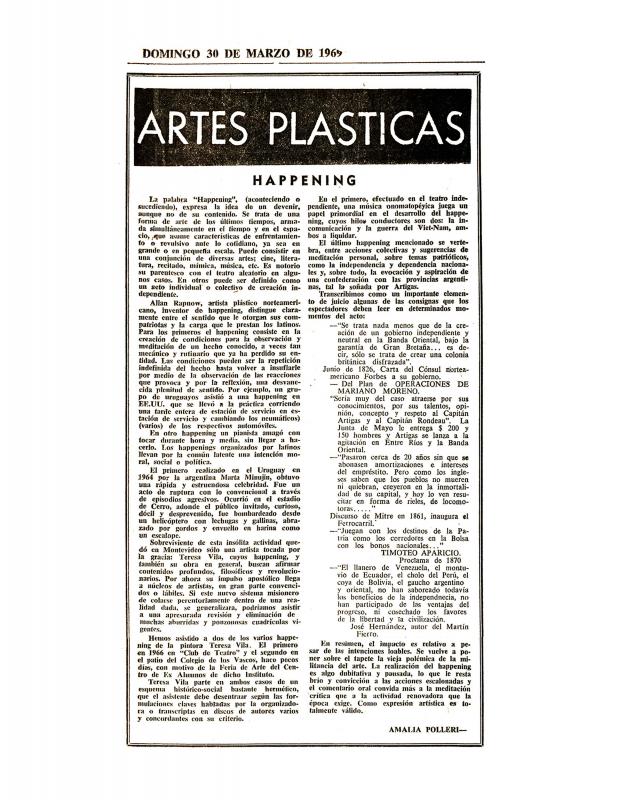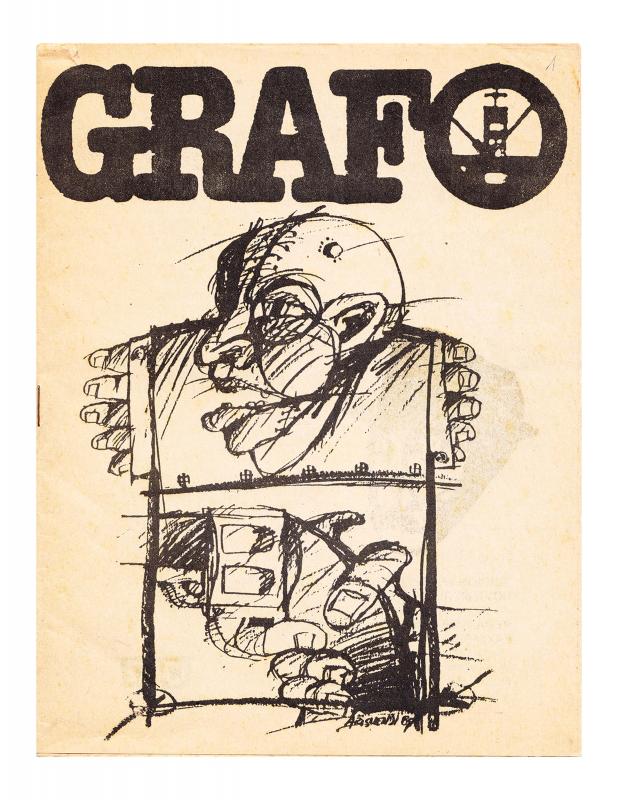The researcher and teacher May Puchet, born in 1964, observed several anteceding events stemming from the sixties becoming, in this case, the object of her analysis two decades later. Such antecedents as: The movement called Dibujazo [Please refer to the ICAA digital archive for “Perfiles del dibujazo” by Gabriel Peluffo Linari (doc. no. 1235833). Happenings/art and performance events by Teresa Vila (1931−2009) [ICAA digital archive “Happening” by Amalia Polleri (doc. no. 1250362)] and by “El arte correo en el Uruguay” [ICAA digital archive (doc. no. 1191850)], created especially by Clemente Padín (b. 1939), among others. The collection of data with shared reflections by researchers who observed the Latin American conceptual practices and the conceptual practices distinct of the Anglo-Saxon differentiating them in response to sociopolitical contexts that were common in Latin America. (The artist and theorist Luis Camnitzer, born in 1937, among them). [refer to the ICAA digital archive “Luis Camnitzer: arte e imperialismo” by Nelson DiMaggio (doc. no. 1244924)]. Also mentioned are the workshops of the artistic masters, such as Nelson Ramos, Guillermo Fernandez, Hugo Longa, and the CMG (Club de Grabado de Montevideo/Engravers Club of Montevideo that fulfilled the special role of the dissemination of information in times of cultural and communicative isolation due the draconian policies and measures taken by the authoritarian government during 1973−84. [Refer to ICAA digital archive for: “Club de Grabado, una institución independiente” by Carlos Fossatti (doc. no. 1181992)]. It also addressed the importance of new diffused spaces and of the artistic exhibition, vis-a-vis the silence and the apathy of the formal spaces, as well as the closing of other common venues in the 1970s. The Galería del Notariado, Alianza Uruguay-Estados Unidos, and the Alianza Francesa, syndicates that were timidly rebuilt at the end of the dictatorial period or of the housing cooperatives, regained uncommon significance. The author analyzed the creations of these groups as collections and ephemeral concerned in questioning in the context of the cultural “annulment of freedoms” and the concept of the “individual authorship”, and rupturing from the traditional genres tending to practices such as performances, orientations and the integration of methods in visual arts with a propensity to use utilize useless objects, appropriate measure to the Arte Povera movement. The cases seen responded to the need to group together to jointly analyze and operate parting from local and precise aspects that had global or multicultural dramatic collective circumstances in common.





